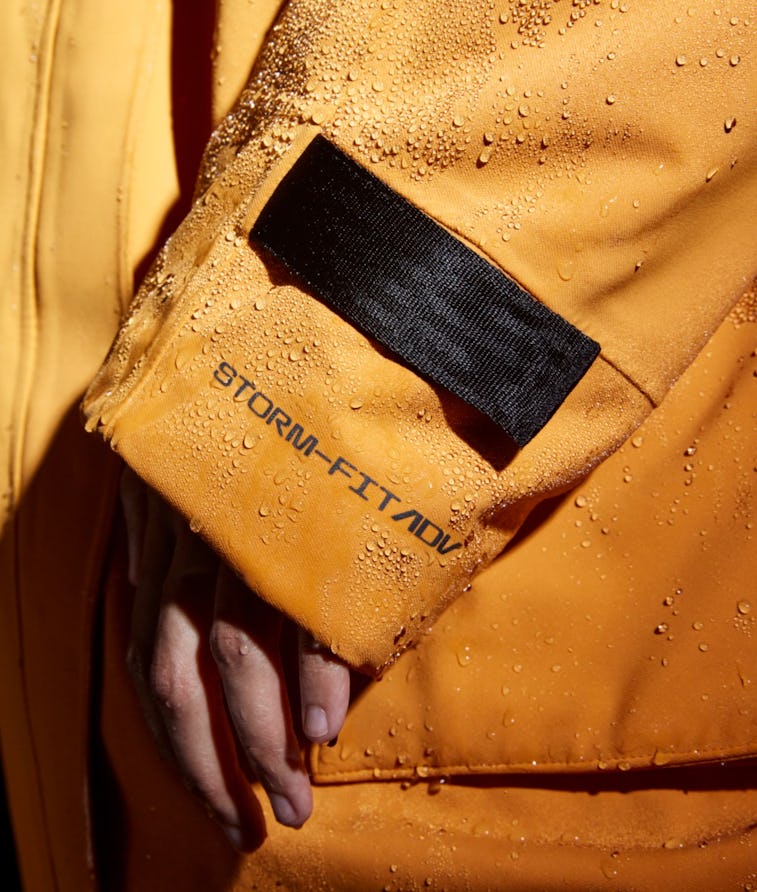Style
How Nike’s FIT ADV jackets keep you warm in the coldest weather
The brand’s reimagined apparel tech uses body mapping and precise engineering to help tackle heat, cold, and moisture.

Thirty years after first introducing the line of performance apparel known as FIT, Nike is launching a successor bolstered by its most advanced technology.
FIT ADV marks a new era for Nike apparel not just in sport, but now in the lifestyle space. There’s Dri-FIT ADV to wick away sweat and keep you cool, Therma-FIT ADV to keep you warm in freezing temps, and Storm-FIT ADV to keep the wind and rain at bay. Nike likens the regular FIT lineup to a performance vehicle, while FIT ADV marks the highest class available.
“Through emerging technologies, machinery, digital computational design, and the brilliance of our creative community, we’ve been able to unlock what we call FIT ADV,” Jannet Nichol, Nike’s VP of apparel innovation, told Input in an interview. “In the future, you’re going to see dimensions across the FIT ADV platform where you’ll actually be able to see the physical manifestation through the aesthetic of a material, for example, that either changes or morphs based on what the athlete is doing.”
All-Terrain
Three key factors will define the FIT ADV line, beginning with new engineering and construction methods that include the ability to design a garment pixel by pixel. The second is functional design features such as a wind and waterproof material with a four-way stretch used in an upcoming FIT ADV parka from the Nike Sportswear Tech Pack. And finally, Nike will tailor each garment for a specific sport or lifestyle segment.
Helping to inform each FIT ADV piece is research conducted both inside the brand-new LeBron James Innovation Center and in extreme conditions much farther away in the world. For its winter 2021 collection, the Nike ACG team went to the ice caves inside Mýrdalsjökull, the fourth-biggest ice cap in Iceland, to gather thermal imaging in order to better understand precisely where insulation is needed.
“Now we’re talking to all types of athletes and that helps us to create better products.”
With the findings in hand, Nike ACG created the Lunar Lake Therma-Fit ADV puffer jacket, which features a heat-regulating and water-repellant shell. PrimaLoft insulation is used in seven different weights for specific areas of the jacket and is made out of post-consumer recycled materials — an effort in sustainability appropriate because the very glacier Nike ACG used for research is melting because of global warming.
“That trip was one of the last we made before lockdown, which is a sign of how long we’ve been working on this,” said Nurs Abbas, design director of apparel for Nike ACG and Nike SB. “We wanted to pick a place with some of the more extreme conditions in terms of cold weather. With the temperatures, snow, et cetera, the place was perfect for the outdoor enthusiast.”
New Places
Nike has already quietly introduced Dri-FIT ADV into its NBA and WNBA jerseys for the seasons beginning in 2021 and other performance apparel including the Alpha Ultrabreathe Dri-FIT ADV sports bra, which features body-mapped cooling zones to help manage sweat. This fall will bring FIT ADV to the lifestyle space for the first time in the line’s 30-year-history — a nod to the Nike mantra “If you have a body, you’re an athlete.”
Although it’s easier to think of FIT ADV in terms of something as tangible as material, it’s actually more of a philosophy used throughout the stages of production before you have a garment in hand. What we’re seeing today upon launch is just the beginning of the capabilities for FIT ADV, and although she couldn’t get into specifics yet, Nichol teased further exciting developments to come in the near future.
“So much of our time in the past used to be spent with elite or emerging athletes,” Nichol says. “Now we’re talking to all types of athletes and that helps us to create better products, but also look in places we may have never looked before as we’re trying to unlock new innovations.”